Viscose Fabric – All You Need to Know

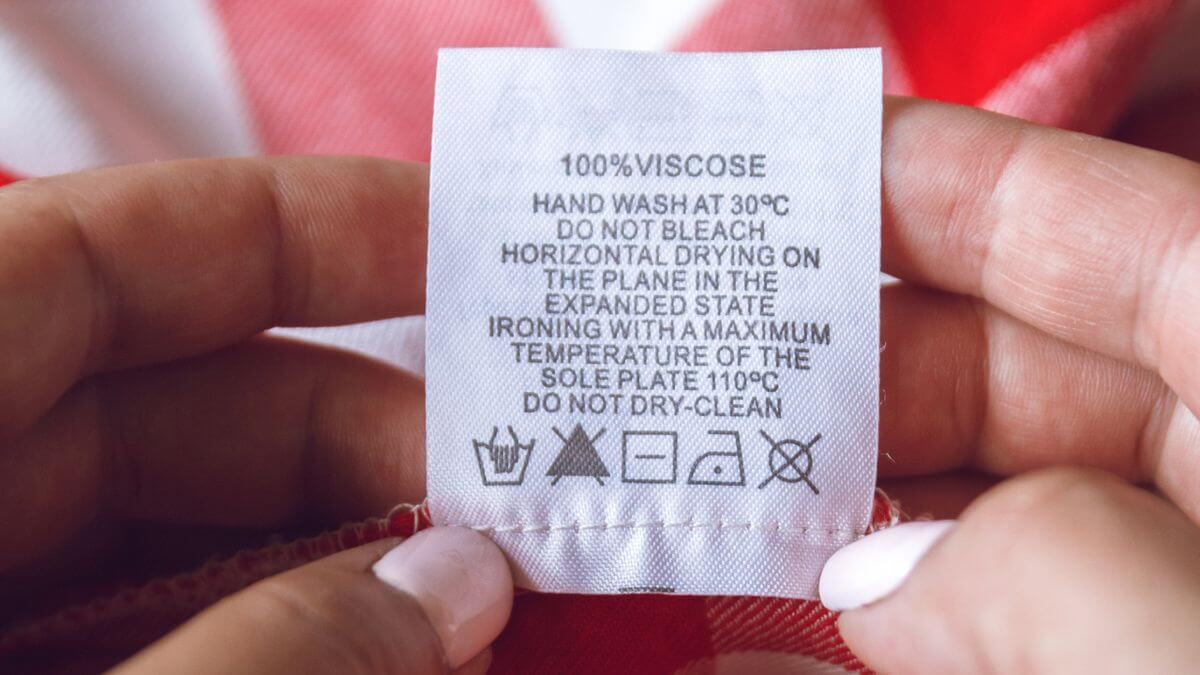
When it comes to selling personalized apparel, understanding fabrics is vital to the success of your print on demand business.
Not all fabrics are made equal – each has different strengths and weaknesses. With a deeper knowledge of fabrics, choosing a material that appeals to your customers and fits their specific needs is easier.
In this article, we’ll look at viscose fabric and its characteristics and discover how it compares to other textiles, so you can pick the one that best fits your needs.
Table of Contents
What Is Viscose Fabric?
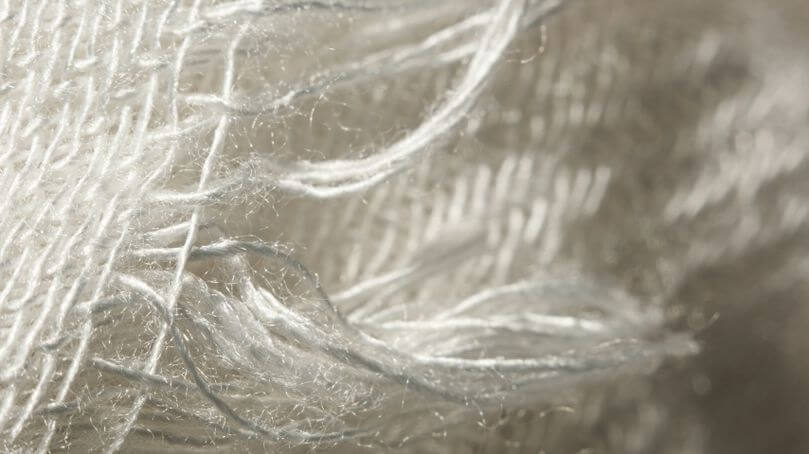
Viscose fabric – rayon – is a semi-synthetic fiber made from regenerated cellulose fibers. It can be extracted from raw materials, like wood pulp, sugar cane, bamboo, and others.
The terms rayon and viscose are often used interchangeably. However, there are slight differences. When it comes to viscose vs. rayon, the major difference is the manufacturing process.
Viscose is one of the three main types of rayon:
- Viscose rayon. Although many plants can be used, it’s commonly produced from wood pulp using the viscose process. As a cheaper alternative to silk, viscose has a similar drape and texture.
- Modal rayon or modal. A semi-synthetic fabric made from beech tree wood pulp. The production uses less sodium hydroxide than viscose, making it slightly more eco-friendly. It’s luxurious, soft, and lightweight.
- Lyocell. As a fabric that’s also commonly made from beech tree wood pulp, lyocell is similar to modal. However, its production process uses fewer toxic chemicals, making it more eco-friendly. Lyocell is breathable and moisture-wicking.
While all these fabrics can be made from wood pulp or other regenerated cellulose sources, they all have a slightly different production process, giving them somewhat different characteristics.
The Characteristics of Viscose Fabric
As with every material, viscose rayon has its particular properties. It’s a versatile fabric suitable for formal, sports, and casual wear. Originally known as artificial silk, viscose has a variety of great properties.
- Soft feel. Viscose fabric can be made to look like natural silk, and it feels soft like cotton.
- Breathable. Unlike fully-synthetic fabrics, viscose rayon is super breathable – perfect for warm-weather clothing.
- Lightweight. Viscose is an airy fabric that’s lighter than cotton.
- Absorbent. The viscose fabric doesn’t trap heat. Since it effectively absorbs water, sweat, and body oils, it’s an excellent pick for sportswear.
- Moisture-wicking. Of all the semi-synthetic fabrics, viscose rayon is the least moisture-wicking, but it’s still a good choice for hot weather where there isn’t much humidity.
- Excellent color retention. The viscose rayon fabric can hold dye for a long time without fading.
However, it’s also important to consider the negatives to get the full picture.
- Wrinkles easily. Fibers tend to wrinkle and crease. However, it’s often blended with another fabric to reduce the likelihood of wrinkling.
- Shrinks in the wash. Viscose rayon can shrink with every wash, depending on how you wash it.
- Highly flammable. These semi-synthetic fibers ignite easily and – like cotton – burn rather quickly.
- Environmental impact. The wood fiber used in creating viscose rayon fabric may not always come from sustainably-grown forests.
- Requires special care. Viscose rayon fibers are very delicate, which means they may break apart if you wash them in the washing machine, so make sure to read the care label.
Not all viscose rayon fabric is created equal – physical properties and impact on the environment heavily depend on the production process, supply chain sustainability, and the manufacturer’s integrity.
How to Wash Viscose Fabric?
Viscose rayon is a delicate fabric that requires special care. Always check the care label first because viscose is often combined with synthetic and natural fibers.
Unless the garment is marked as machine washable, do not put it in the washing machine, but wash it by hand with cold water.
If the care label allows and you choose to use a washing machine, then do the following:
- Select a gentle cycle or “Hand Wash” setting
- Turn the viscose clothes inside out to preserve colors and brightness
- Put them in a mesh laundry bag to avoid snags and tears
- Set the water temperature to cold and spin to the lowest setting
If you need to remove stains from, for example, viscose shirts, carefully rub the stained area with a mild detergent, but only for a brief moment, to avoid damaging the clothing items.
Does Viscose Shrink?
Yes, unfortunately, the viscose rayon shrinks. Usually, viscose clothes are made from a blend of fibers. The amount they shrink depends on the percentage of viscose in the material.
If your clothes are made of 100% viscose, they may shrink by a lot, so you should always read the care label first and follow the instructions.
Is Viscose Breathable?
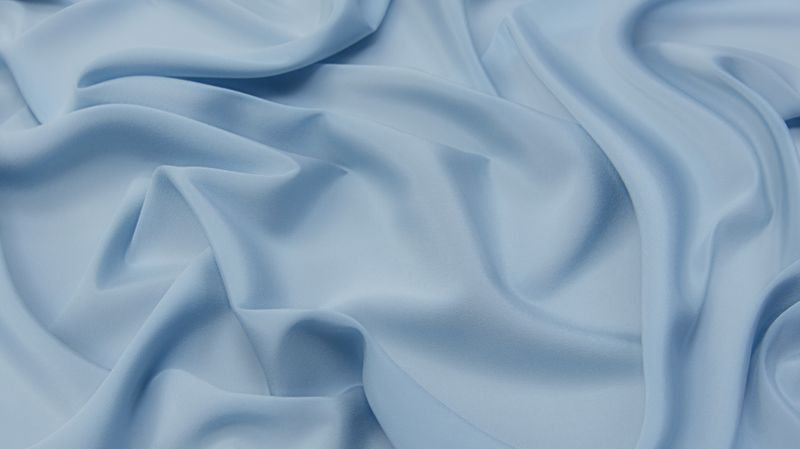
Yes, this semi-natural fabric is highly breathable, doesn’t trap body heat, and lets air flow freely.
Viscose effectively absorbs water, sweat, and body oils, making it an excellent choice for hot summer days.
Make It Happen Today!
The Manufacturing Process of Viscose Fabric
Although viscose is made from natural materials, its manufacturing processes involve a variety of toxic chemicals – hydrogen sulfide, sulfuric acid, sodium hydroxide (caustic soda), and carbon disulfide (also spelled as carbon disulphide).
These toxic chemicals are either used in the manufacturing process or found in air emissions around viscose manufacturing sites.
As a plant-based fiber, viscose rayon is biodegradable and breaks down quicker than cotton products.
However, if asked whether it’s eco-friendly, the answer is no – even though viscose is made from organic material (renewable resource), the environmental impact of viscose production is still high.
Yet, as the supply chains become more transparent and eco-friendly production processes are adopted, it has the potential to be.
Viscose vs. Other Fabrics
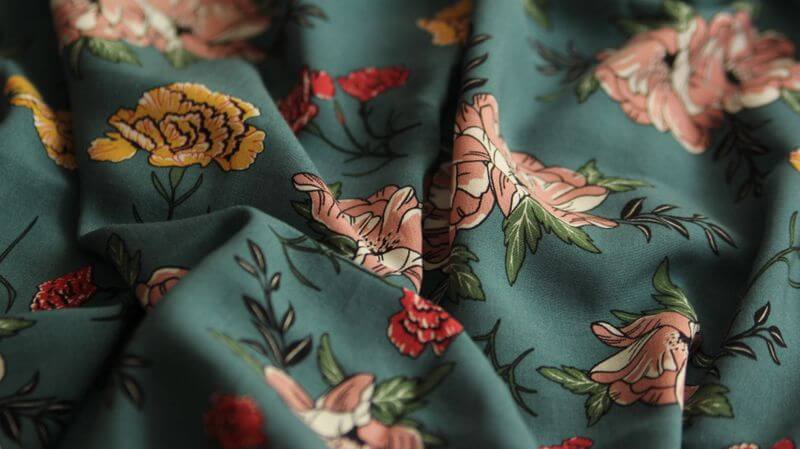
As an alternative to silk, cotton, and polyester, viscose rayon fabric has various great properties that have made it popular in the fashion industry.
Viscose is a versatile fabric ideal for t-shirts, blouses, dresses, bed sheets, towels, and a wide variety of other products.
Let’s explore how viscose compares to cotton, polyester, and modal rayon.
Viscose vs. Cotton
Although cotton is stronger and more durable than viscose rayon, they do share a lot of similarities.
| Viscose | Cotton | |
|---|---|---|
| Origin | A semi-synthetic fiber made from wood pulp and other regenerated cellulose fibers | Cotton is made from natural materials |
| Texture | Soft and silky smooth but can feel cold against the skin | Soft and comfortable |
| Durability | Less durable when wet | Stronger when wet |
| Breathability | Viscose material is breathable. Excellent for warm-weather conditions |
Cotton is breathable. Perfect for garments worn close to the skin |
| Versatility | Viscose fabric blends well with other synthetic and natural materials | Versatile, blends well with other materials |
| Origin | |
|---|---|
| Viscose | A semi-synthetic fiber made from wood pulp and other regenerated cellulose fibers |
| Cotton | Cotton is made from natural materials |
| Texture | |
| Viscose | Soft and silky smooth but can feel cold against the skin |
| Cotton | Soft and comfortable |
| Durability | |
| Viscose | Less durable when wet |
| Cotton | Stronger when wet |
| Breathability | |
| Viscose | Viscose material is breathable. Excellent for warm-weather conditions |
| Cotton | Cotton is breathable. Perfect for garments worn close to the skin |
| Versatility | |
| Viscose | Viscose fabric blends well with other synthetic and natural materials |
| Cotton | Versatile, blends well with other materials |
If you’d like to learn more about cotton, our recent article – Guide to Polyester, Cotton, and Blended Fabrics – has everything you need to know.
Viscose vs. Polyester
Although both are made from long fibers, each is made differently. While some consider viscose and polyester to be similar, there are some differences.
| Viscose | Polyester | |
|---|---|---|
| Durability | Although less durable than polyester, it's more durable than silk | Polyester is very durable |
| Wrinkling | Viscose fibers tend to wrinkle and crease | Polyester is prized for its wrinkle resistance |
| Ability to wick moisture | Wicks moisture away to some extent, yet less than polyester | Wicks moisture away easily |
| Resistance to pilling | More likely to pill | Less likely to pill |
| Origin | A fiber made from wood pulp and other regenerated cellulose | Polyester is a fully-synthetic fabric made from petroleum, a non-renewable resource |
| Durability | |
|---|---|
| Viscose | Although less durable than polyester, it's more durable than silk |
| Polyester | Polyester is very durable |
| Wrinkling | |
| Viscose | Viscose fibers tend to wrinkle and crease |
| Polyester | Polyester is prized for its wrinkle resistance |
| Ability to wick moisture | |
| Viscose | Wicks moisture away to some extent, yet less than polyester |
| Polyester | Wicks moisture away easily |
| Resistance to pilling | |
| Viscose | More likely to pill |
| Polyester | Less likely to pill |
| Origin | |
| Viscose | A fiber made from wood pulp and other regenerated cellulose |
| Polyester | Polyester is a fully-synthetic fabric made from petroleum, a non-renewable resource |
By blending viscose and polyester, polyviscose is created. A combination that largely retains the pleasant drape and feel of viscose.
Viscose vs. Rayon
The difference between viscose and rayon is a thing that easily gets confused. In short, all viscose is rayon, but not all rayon is viscose – the difference lies in the production.
Although the manufacturing processes are similar, the modal undergoes more processing, making the final product stronger.
| Viscose | Modal Rayon | |
|---|---|---|
| Texture | Soft and smooth | Soft and smooth |
| Eco-friendliness | Not eco-friendly | Uses less sodium hydroxide than viscose, which means less toxic waste |
| Breathability | Less breathable than modal rayon | This fabric is more breathable, lighter, and stronger than viscose |
| Texture | |
|---|---|
| Viscose | Soft and smooth |
| Modal Rayon | Soft and smooth |
| Eco-friendliness | |
| Viscose | Not eco-friendly |
| Modal Rayon | Uses less sodium hydroxide than viscose, which means less toxic waste |
| Breathability | |
| Viscose | Less breathable than modal rayon |
| Modal Rayon | This fabric is more breathable, lighter, and stronger than viscose |
When compared to viscose, modal is more durable, pills less, and has a greater fiber strength when wet, making it a little easier to care for.
Products With Viscose From Printify
Today, a blend of viscose with other fabrics is a frequent sight. As an easy way to strike a balance between comfort, breathability, and durability, blended fabrics offer the best of all worlds.
Whether you’re looking for t-shirts, tank tops, or blankets, here are some products you can customize to your heart’s content with just a few clicks.
Viscose Rayon Clothing
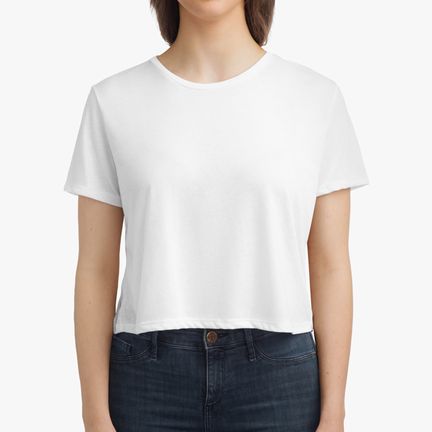
Seasons may change, but cropped tees aren’t going anywhere – always here, always in style. Whatever the activity, customized cropped tees make the perfect companion for every adventure.
With a fiber composition of 65% polyester and 35% viscose, this cropped tee offers a flowy fit for an easy-going appearance and unrivaled comfort.
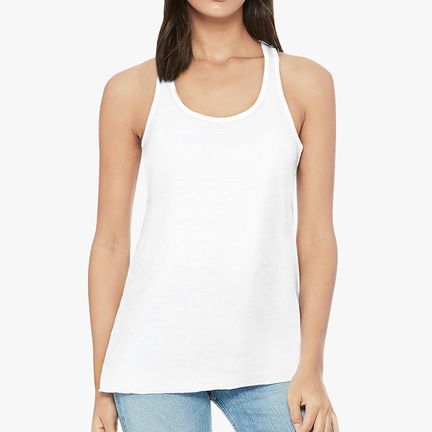
A go-to racerback tank top for those who enjoy running, hiking, or any other physical activities that require stylish apparel.
With a fiber composition of 65% polyester and 35% viscose, this racerback tank top offers the best of both fabrics – durability of polyester and softness of viscose.
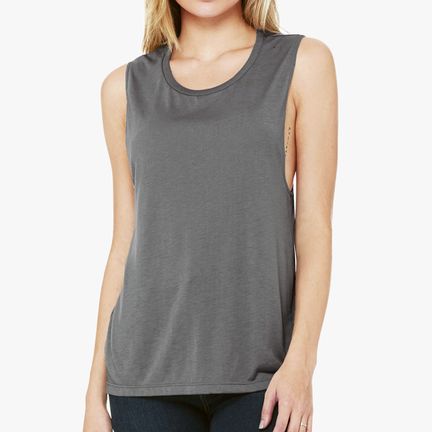
When choosing the right workout clothes, people want fashion, comfort, and fit because they all impact the success of their workout.
With a perfect blend of polyester and viscose, these tank tops offer a relaxed fit that looks great with athletic clothing.
Other Products
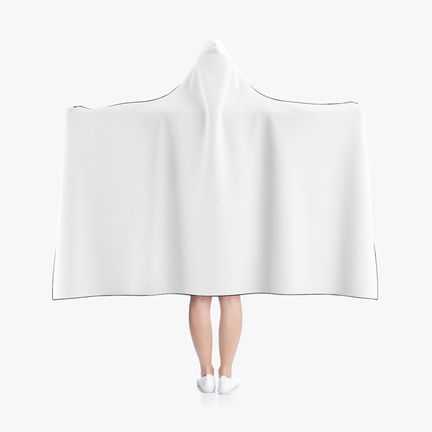
Whether it’s a crisp morning, rainy afternoon, or coldish evening, hooded blankets are an excellent choice for chilly days.
With a unique blend of 95% polyester, 3% viscose, and 2% spandex, these hooded blankets don’t pill, are easy to clean, and dry quickly.
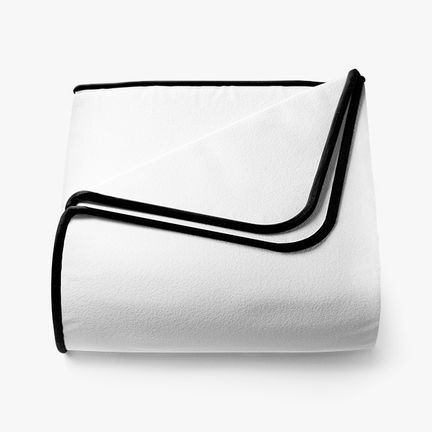
Surprise your customers with a personalized blanket that adds the perfect finishing touch to any room. These blankets are lightweight, durable, and easy to care for.
Whether for decoration or practical use, these ultra-soft blankets are an excellent way to increase your sales. With your design, logo, or thoughtful message, they’re sure to be treasured for years to come.
Start Your Own Business With Printify
With Printify, anyone can easily start their own print on demand business. Our intuitive Mockup Generator enables you to add any design you like and create unique products that your customers can wear with confidence and style.
When the final product is ready, and you’re happy with the result, we handle all the heavy lifting – printing, packaging, and shipping.
Moreover, signing up for an account is 100% free, and you only pay for a product after you make a sale.
Now You Now Everything About Viscose Fabrics
In the vast world of fabrics, neither is better than the other. The truth is, they all have their strengths and weaknesses – viscose is no exception.
Viscose offers a middle way if you can’t decide whether to use a synthetic or natural fabric.
With many great properties, it’s a fabric every print on demand entrepreneur should be acquainted, if not friends with.
Start Your Own Print on Demand Business Today!
Keep Exploring Our Blog
Written by

Leon Walker
Share the article
Topics
